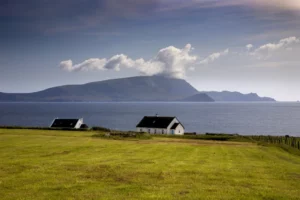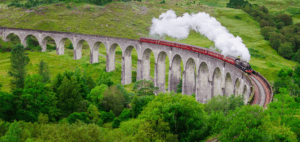The Fascinating History of Belfast City
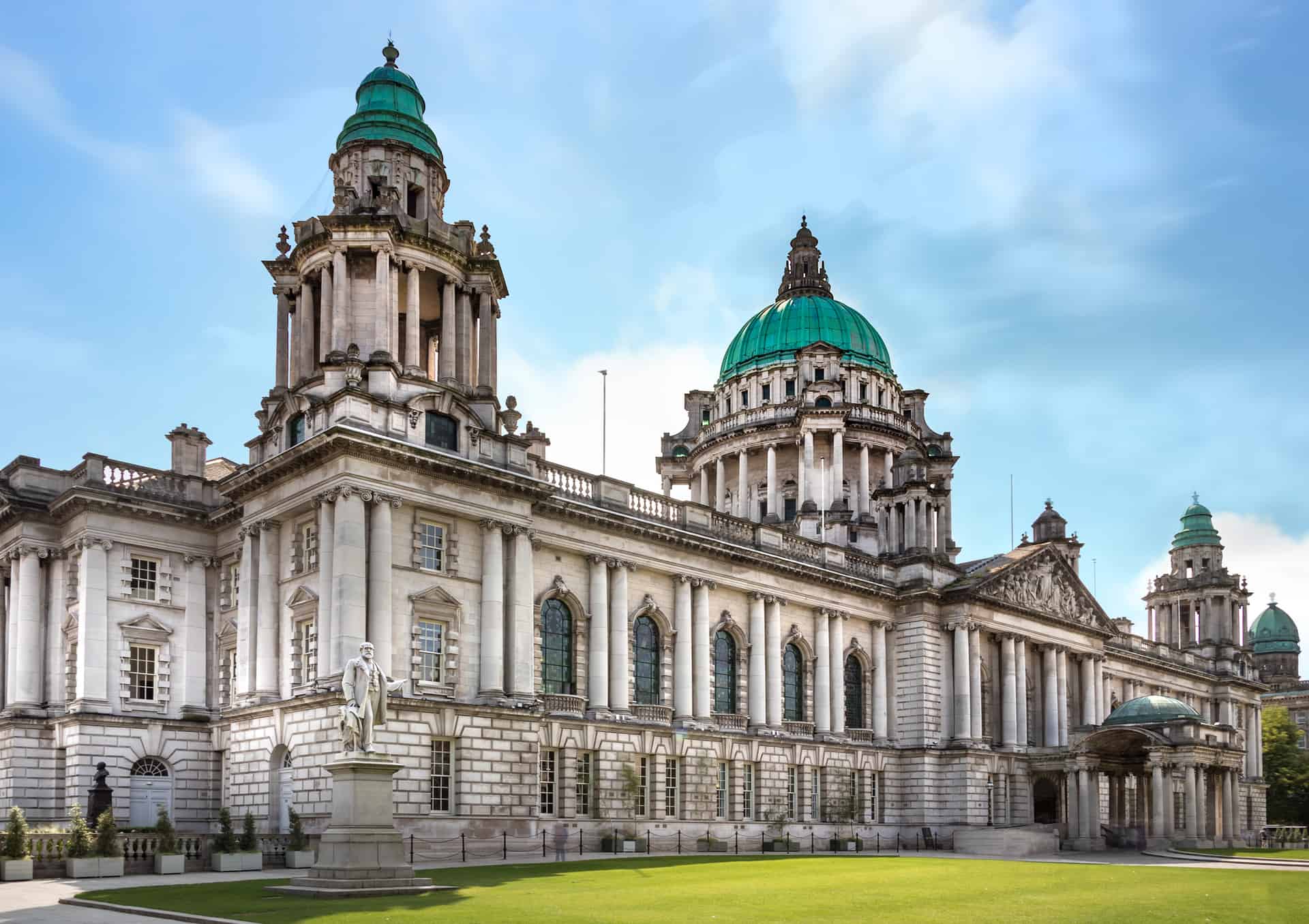
Updated On: April 07, 2024 by Asmaa Alhashimy
Every place you visit has an exciting story to tell you, and Belfast, Northern Ireland, doesn’t let you down. The History of Belfast is an incredibly fascinating one that you should explore, and we are here to help you explore it.
On almost every wall, you will find a lot of splashing colours, murals, and lovely paintings. Some of them are random, but mostly, they tell many historical tales. On the other side, many commemorate essential events in Irish history. Let’s see some of the most significant streets in Belfast and learn about the tales on the walls. But there is more to Belfast that many might not know about, so keep reading to learn about this brilliant city.
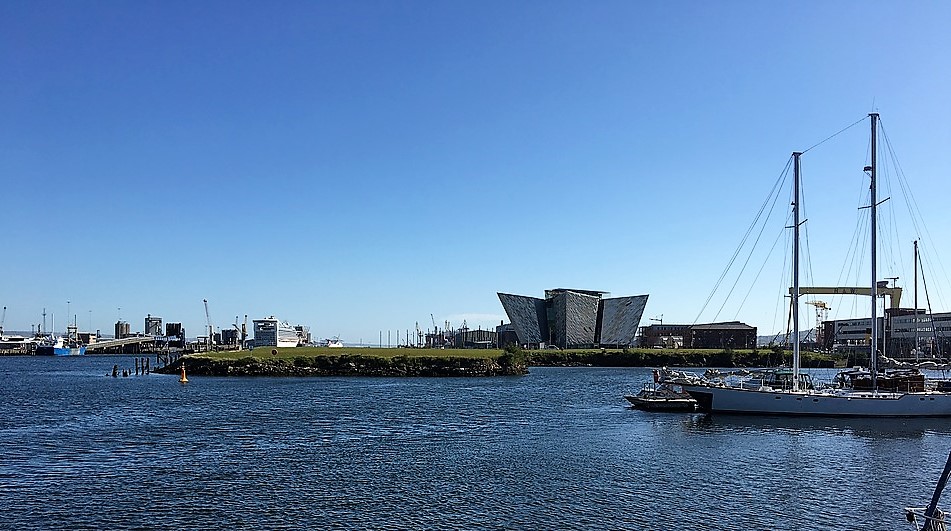
A Brief History of Belfast
In the early times, settlements started taking place in Belfast during the Iron Age. Yes, when iron was first introduced to Ireland. No wonder it is one of Northern Ireland’s major industrial cities. From the 18th century, Belfast became a major commercial centre. That was quite obvious through the wall paintings on the street. It embraced a lot of firms and factories in different industries that exported goods all over the world.
However, traditional industries witnessed a significant deterioration in the late 20th century. That was when Christianity arrived in Ireland. People started to split into different categories. Conflicts had even risen between Irish Catholics and Irish Protestants. Such struggles were the main factors in causing the industries to wane. That’s because the working class areas were no longer united. The violent conflict caused people to divide according to their beliefs and values, affecting work.
Gratefully, those conflicts were resolved many years ago. Belfast now happens to be the capital of Northern Ireland. It is a peaceful city representing developments and growth in more than a few fields. You can peacefully roam the streets of the inner city and dock areas. There is a lot to see and learn about. No matter how much you think you know, there is always more. The history of Belfast is unique; it is a city that has a colourful past, so keep reading to find out more.
Unfolding the Stories Behind The Images on The Walls
Throughout the video, many stories were engraved into the walls of the streets of Belfast. It is incredible to see history always alive through these images. The streets speak loudly, revealing a fantastic Irish history that cannot soon die out. The streets in the video are known to be popular spots in Belfast. Here are some stories behind the images and paintings in the video. We promise you will enjoy them.
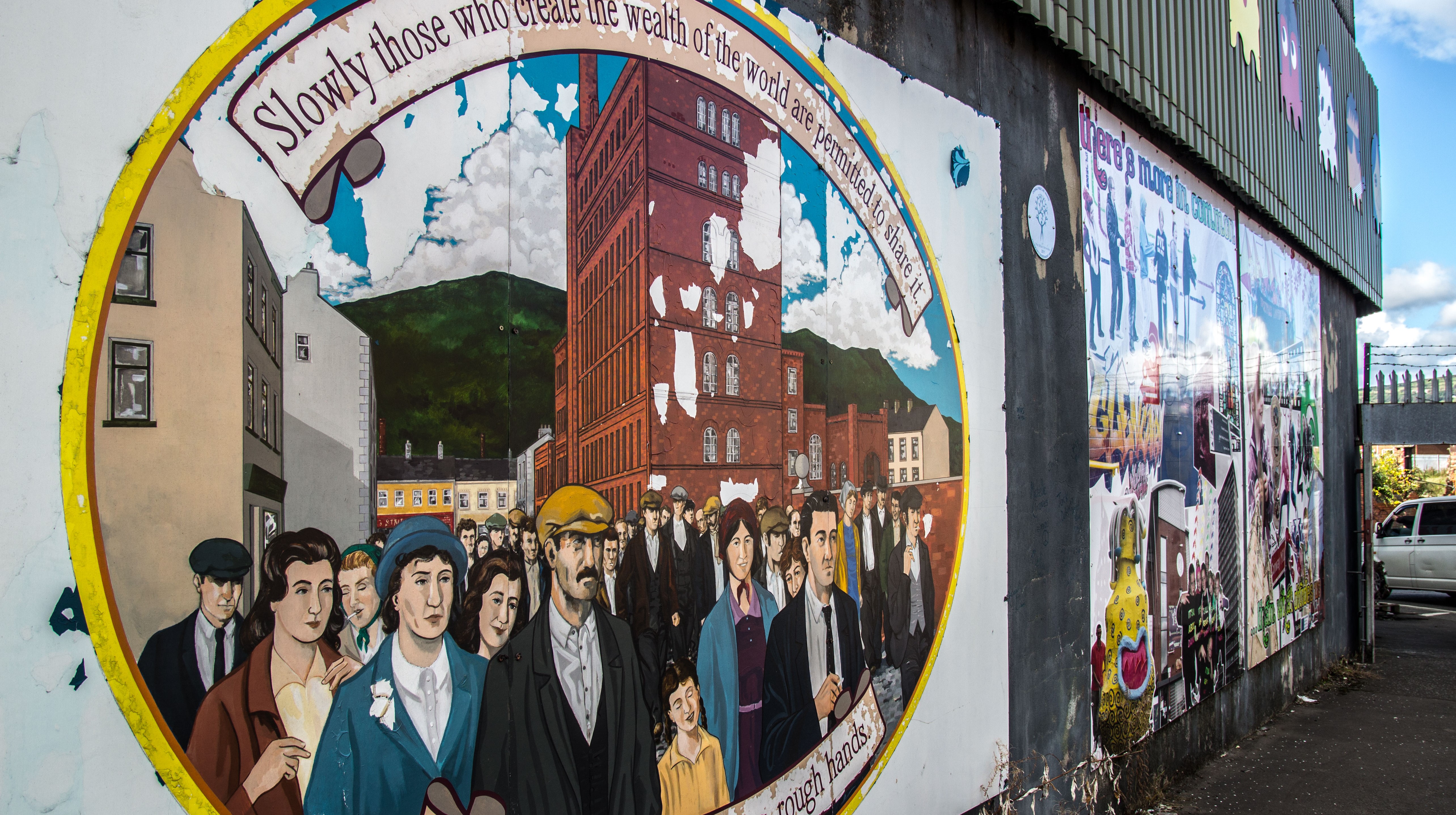
The Mill Workers of Belfast
Since Belfast was famous for being a trading centre, it was full of mills and factories. A lot of workers lived around the town during the early times. Their lives were far from being easy. Not to mention that back then, things were pretty basic and undeveloped. Thus, factories were not provided with the needed tools to ensure safety.
Long story short, workers faced death every day throughout their lives before they died. There were also a lot of female workers; mostly, they were given the name “doffers.” It meant women who doffed and tied up the spindles of linen threads. Most of the female workers worked in linen factories. Back then, the city was famous for being the best in manufacturing linen.
Everyday Struggles of Mill Workers
Workers had to deal with obstacles daily. As if living near the noisy factories wasn’t enough, they also faced humiliation. Punctuality came first for factory employers, so they had a gateman who made life harder for workers. Everyone had to be at work at an exact time. If not, they would be locked outside, enduring heavy fines or recorded in the complaints archive.
Well, wondering how those people got up in time before the invention of clocks and phones. They had a Knocker Up; the latter was an old sailor. His job was knocking on every house door to wake people up daily. Some people woke up due to the unpleasant sounds of the nearby factories. However, others regarded the job of the knocker-up as a lifesaver.
Waking up early doesn’t seem to have been the only struggle the workers dealt with. The spiteful environment inside the factories was a whole different story. The open machinery put the lives of men and women in danger. They never knew if they could ever make it home after work. There was always dust in the air and dirty water on the floor.
Such a nasty environment escorted the spread of diseases like Dyspnoea and Onychia. The former was a disease that affected breathing due to the dust the lungs had to endure daily. However, the latter was an inflammation that affected the big toe.
In the Memory of the Mill Workers
Those people will never be forgotten. Their memory is even evident on the walls around the city. However, one artist, Ross Wilson, decided to commemorate the female workers through a piece of art. He sculptured a bronze piece that acknowledges the women workers who were long gone. Public art stands at the corner of Cambrai Street and Crumlin Road. The sculpture is a portrayal of a young female worker.
Ross wanted the world to remember the women of Belfast who had gone through awful circumstances. They endangered their lives every day to be able to help their poor husbands and feed their children. The sculpture also reveals the girl barefooted for unravelling their poverty and the reasons they were vulnerable to many diseases. They never had the privilege of living a decent life or, at least, a safe one. Those women deserve to be remembered in the best ways possible.
Read the ghostly story behind the mysterious hand of Belfast mill workers.
Titanic Town
The world knows about Titanic, the ship that sank on its virgin voyage despite its strength. It all started here in Belfast. So, no matter how much knowledge you already have about the ship, you won’t beat the city’s locals. They breathe the air in which the world’s famous stories take place.
Titanic’s story started here, and its soul has seemingly never left. You can roam around Titanic Town and learn the ship’s history from when it was only an idea. It can be found in the Edwardian-era Thompson Dry Dock.
Here is what to expect to see in Titanic Town. You will come across nine galleries at the Titanic Museum in Belfast- yes, quite many. You’ll trace the ship’s story from the euphoria of its creation to its inevitable tragedy. Most importantly, you will live the vicarious thrill of the Titanic experience well.
There is also an underwater cinema show and cabin recreations. This town received the title of the World’s Leading Tourist Attraction at the World Travel Awards. You can’t help but fall in love with the stunning simulation of the past.
The building also resembles the Titanic Ship; it is the same height as the ship, and its four corners represent the Titanic Bow, helping to add a more realistic view for those visiting.
Check out the fantastic museum below:
Harland & Wolff Firm
Another essential part of the history of Belfast is through the Harland & Wolff Firm, a heavy industrial company that constructs and repairs ships. It is famous for having built the ships of the White Star Line, including The Titanic. The company dates back to 1861.
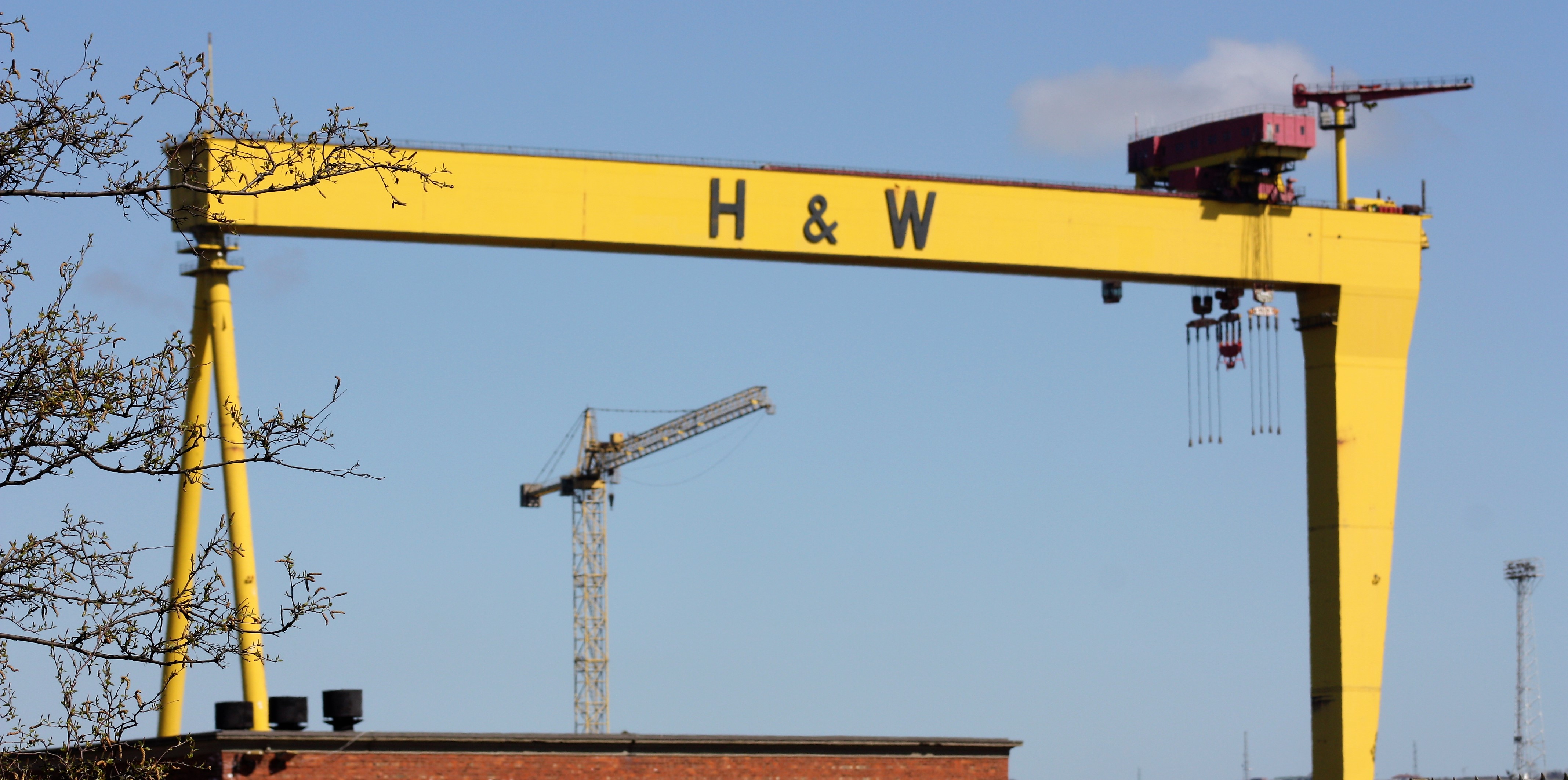
Hence, the firm was formed by Edward James Harland and Gustav Wilhelm Wolff. A few years earlier, Harland was a general manager. He bought the small shipyard on Queen’s Island from Robert Hickson, his then-employer. After that, he had his firm and had Wolff, his assistant, as a partner.
They successfully worked as Gustav Schwabe, Wolff’s uncle, and invested in the Bibby Line. Thus, Harland and Wolff Firm were able to build the first three ships for that particular line. They also were the ones to replace several materials within the boat and call for innovation.
Harland died long before the construction of the Titanic. He never had the chance to witness one of the most significant ships the world had ever seen. However, all credits go to him since he was the reason it all happened.
Titanic Tour
Some different facilities and connections can take you way back through the past. One of the top Titanic tour guides is Titanic Tours Belfast by Susie Millar. The latter was the granddaughter of one of the Titanic engineers, Tommy Millar; she designed this tour herself. Click here to learn about Tommy Millar.
The top facilities for food, drink, and accommodation include The Titanic Pub and Kitchen, Robinson’s, and Rayanne House.
Guinness is Good for You!
For a few hundred times, you’ll encounter a little sign saying, “Guinness is Good for You.” What is the deal with this sign? Don’t tell me that you haven’t guessed it already. Guinness is one of Ireland’s finest beers. It has been popular for as long as Ireland has been around.
The Guinness family was one of the most prominent families in Ireland. Thanks to them, their last name became just synonymous with Ireland. That family was aristocratic and wealthy; they were also Anglo-Irish Protestants. People know them because they have accomplished much in different industries, mainly politics and brewing.
Guinness Beer, Ireland’s finest dry stout, was founded by Arthur Guinness. In earlier times, wealthy families used the intermarriage of cousins to keep their integrity and fortune. The same went with the Guinness family.
Entering the Brewing Business
In 1752, the Guinness family started their brewing business in Dublin. They began on a small scale and became as international as they are today. In the 18th century, tea was among the luxury goods that weren’t affordable for everyone. Thus, the Guinness company began brewing ale, the majority’s essential drink. Besides ale, the company also brewed staples.
Nowadays, Guinness is a recognisable staple worldwide. You can find it in almost every Irish pub and bar. No wonder there are always those signs about Guinness on the walls of bars and cafes. This drink also plays a significant role in celebrating St. Patrick’s Day. It is not a usual drink; people have written songs about it. There is even a proper way to pour and toast with it.
The Story behind Faugh-A-Ballagh
“York Street is full of murals that revive Irish history. One of the very prominent murals is the Faugh-A-Ballagh. You can find it on the side wall of the Times Bar. This painting commemorates the Irish and Northern Irish soldiers who served in the British military. Faugh-a-Ballagh is an Irish battle cry; it means” clear the way.” However, the spelling goes back to an Irish phrase Anglicised in the 18th century.”York Street is full of murals that revive Irish history. One of the very prominent murals is the Faugh-A-Ballagh. You can find it on the side wall of the Times Bar. This painting commemorates the Irish and Northern Irish soldiers who served in the British military. Faugh-a-Ballagh is an Irish battle cry; it means “clear the way.” However, the spelling goes back to an Irish phrase Anglicised in the 18th century.
Legends say that the first person to use the phrase was the Prince of Wales, the 87th Regiment of Foot. The Royal Irish Regiment still use it as their motto to this very day. Clear the Way or Faugh a Ballagh was the Royal Irish Fusiliers’ motto. The Royal Irish Rangers and now the Royal Irish Regiment even used it.
About York Street
Most of the murals on the walls are found on York Street. One of Belfast’s main access roads goes back to the early 19th century. The street was named after the Duke of York, Frederick Augustus. He also happened to be the son of George III. Most of the streets were also named after members of the same royal family, including Frederick Street and Henry Street.
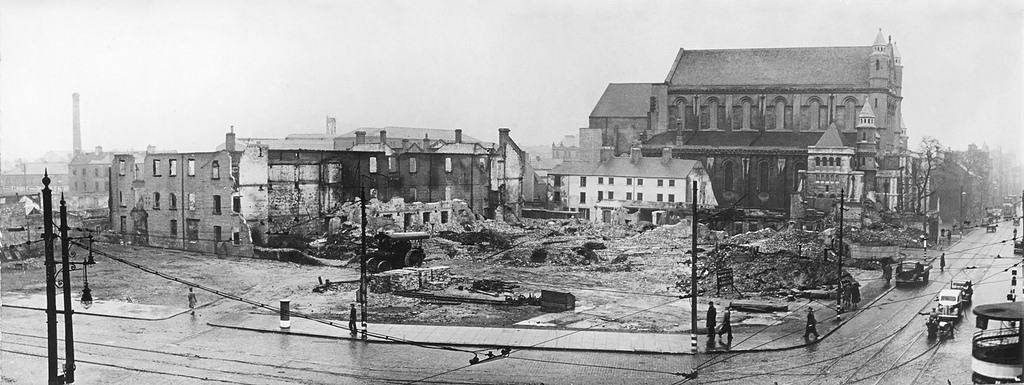
Murals on St. Vincent Street
St. Vincent Street is another famous road, just like York Street. Across the street, you can see a background featuring the Crusaders’ football ground. Legends say that the powerful team used to train there back when they were a junior team. Besides there is also a board that reads the Hubb Community Resources Centre and Bowling Club.
On the walls of the buildings, a painting features children leaving their houses behind to being bombed out. According to different sources, the building used to house the Civil Defense was known as The Blitz during World War II. Most of the buildings that were around during that era are gone. However, this one is deemed the last remaining Civil Defense Structure in Northern Ireland.
The First Shipyard in Belfast
William Ritchie was the first to have founded shipbuilding in Belfast. He was born in Ayrshire and opened his shipyard by age 20. However, the Great Depression of the 18th century affected his business negatively.
He left for Belfast, looking for better opportunities. Besides, he was promised the support of the Ballast Board. Thus, along with his brother, Hugh, he established a yard on the Co Antrim Shore of Belfast Lough. The Hibernia was the first ship built in Belfast by Ritchie.
With the support of the Ballast Board, the two brothers could build and launch over 32 vessels. They also established new dock facilities as well. Later, Hugh had his own shipbuilding business and John, their third brother.
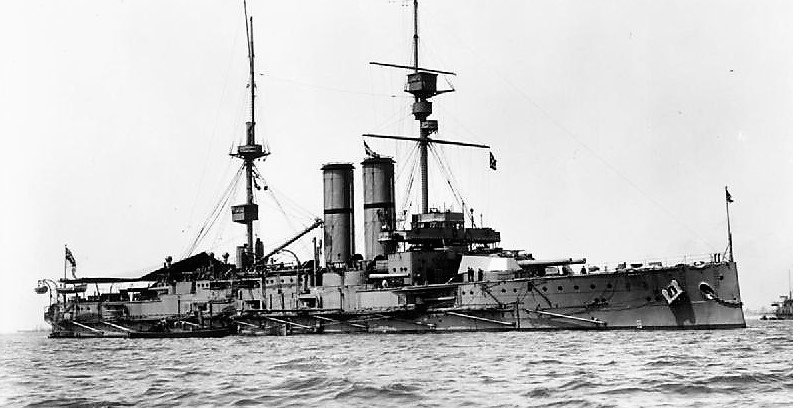
Charles Connell Taking Charge over the Shipyard in Belfast
William Ritchie was the first to set up a yard of shipbuilding back in 1791. The industry witnessed remarkable success despite the obstacles they had faced, and upon the retirement of William Ritchie, Charles Connell, an employee in the firm, made a bid. He managed to take the lead in building ships around Belfast in 1824. Connell changed the firm’s name to Charles Connell and Company, becoming an essential figure in the city’s folklore.
Other Long-Forgotten Shipyards
Belfast is famous in the industries of shipbuilding. Harland and Wolff were the most dominant. But they were not the only ones anyway. Workman Clark’s & Co. was also dominant, and they were next door to H&W. It was known as the Wee Yard; legends say they only built eleven vessels. They were all for the Royal Navy.
However, they repaired cruisers, ships, and marines after they underwent severe destruction in battles during the First World War. Despite their success, they closed down in 1935, and Harland & Wolff purchased most of the remaining facilities.
The Wee Yard
Before changing the name to the Wee Yard, it was called Workman Clark’s. Frank Workman and George Clark were the ones who started it in 1880. Before starting their own company, they were trainees at Harland and Wolff. Their location was in north Belfast on one bank of the River Lagan.
Later, they took over Mcllwaine and Coll, Harland and Wolff’s rivals. During the First World War, the company skyrocketed and reached its peak. The success did not last for that long. After the war, the number of employees fell significantly. One thousand nine hundred twenty-eight, the company announced its bankruptcy, and the Tyneside Company Northumberland Shipping bought it.
Belfast Exported Goods to the Whole World
Being an active trading centre, Belfast had a lot of factories specialising in different linens. While shipbuilding was the most dominant industry, there were other industries. Those industries included linen manufacturing, carpets, cigarettes, and fans.
Most linen and carpet manufacturers hired female workers, hence the commemorating sculpture of William Ross. Here are some of the significant manufacturers in Belfast that have exported goods worldwide, which add to the unique history of Belfast.
Robinson and Cleaver: Irish Linen Warehouse
Robinson and Cleaver’s had been a popular store for Linen in Belfast. The store opened at Castle Place in 1874, and later, they moved to High Street. A few years later, they had established one of the city’s most significant postal trades. The façade of the store was magnificent, and the staircase was made of marble, not to mention the brilliant displays of the windows and the eye-catching decorations that matched every season.
Another reason it became popular was being very selective in choosing the staff. The staff were professional and experienced; they knew their clients well and provided fantastic service. Thus, they were capable of attracting more and more customers and constantly notifying them of new items.
The store managed to become very popular and the best in town. They also exported their goods abroad. However, the store closed down in the ’80s despite all the renovations it had undergone. The brilliant staircase was sold in an auction. In the same house, Next and Principles opened their first shops. Right now, the building is empty, but it remains one of the most significant landmarks of Belfast.
SIROCCO for Centrifugal Fans
“SIROCCO was a famous name synonymous with the air technology industry. William Beney, a machine trader, and Robert Child established the company together in 1888. They started it under”White, Child, and Beney”. In the early 18th century, the company cooperated with Davidson, a ventilation company, in Belfast.”SIROCCO was a famous name synonymous with the air technology industry. William Beney, a machine trader, and Robert Child established the company together in 1888. They started it under “White, Child, and Beney”. In the early 18th century, the company cooperated with Davidson, a ventilation company, in Belfast.
The company’s growth continued, and they released a production site that helped with further expansion. SIROCCO engineers were the influential figures behind the creativity of the business.
They specialise in developing several products, including metalwork, paper, and cement. However, the company’s expansion escorted a change in the property’s structure. Then, SIROCCO stopped producing textile machinery only dedicated to fans and heat exchangers. They also started developing new products related to theirs, such as control units, filter systems, and more.
Gallaher’s Blue Cigarettes
Back in 1857, Tom Gallaher was the reason for introducing the world’s most famous tobacco factory. He opened the factory in 1896 in Belfast, producing cigars, cigarettes, and tobacco. Before moving to Belfast, Gallaher’s factory was based in London and Dublin.
In the 20th century, he divided the company into Belfast, which specialised in cigarettes, and Wales, which specialised in cigars. Gallaher’s success also lay in his ability to purchase most rival companies. He obtained J.R. Freeman, Benson & Hedges, J. A. Pattreiouex, and Cope Bros & Co. Moreover, the company expanded when Gallaher bought Russia’s major cigarette brand, Liggett Ducat.
Starting in 2002, the Reynolds Tobacco Firm cooperated with Gallaher, increasing the sales of cigarettes in European Union countries. The plan included the firm running through 2012; however, things took a different turn. In 2007, Japan Tobacco took over the Gallaher Group. However, the joint was terminated in November of the same year.
Belfast Metropolitan College
Belfast Metropolitan College is one of the finest universities in Northern Ireland that provide high education. It started in the early 1900s with the opening of the Municipal Technical Institute. In 2018, the college turned 112 years old. Being around for over a century reveals a timeline of exceptional success that adds to the history of Belfast.
No wonder those who built up the college were a group of the city’s prominent business leaders. Nowadays, colleges provide many flexible programs that fit many students. The programs include full-time and part-time ones.
Belfast Marina Harbour
Another part of the history of Belfast is that it’s home to the largest marina in the city centre of Northern Ireland. Titanic Quarter houses the marina, providing docks for yachts, the Titanic Belfast, and the Odyssey (SSE Arena). We will briefly mention the essential details about the latter.
Belfast Harbour operates a marina that offers easy access to the Irish Sea and Belfast Lough. Above and beyond, it also provides a lot of services and facilities. Those facilities include water on all pontoons, toilets, showers, and washing machines. They are available within the Marina Building. Besides, the pontoons contain electricity.
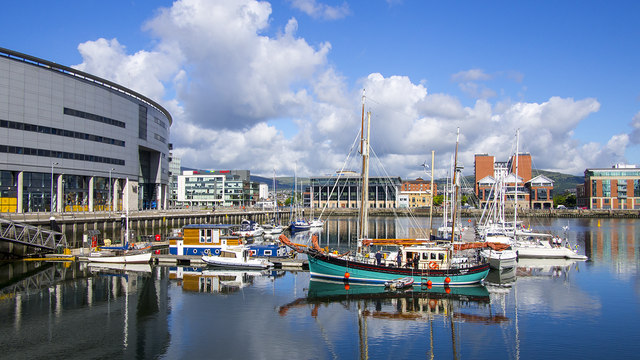
Not to mention that the area is around 40 berths that can house several vessels at a time. The Odyssey Complex contains payphones that work during opening hours so people can connect with their families and friends. There is also a Free Wi-Fi connection inside the Marina Building.
The Odyssey Complex & SSE Arena
The complex was established in 1992 but only became active in 1998. In 2000, it was opened to the public and underwent many expansions and renovations. People used to refer to it as the Odyssey Centre. However, it is now the SSE Arena Belfast. This building provides entertaining facilities and sports. It sits within the heart of the Titanic Quarter.
The place provides an arena for many purposes, including a shopping centre with a movie theatre and a bowling alley. The complex’s full name is the Odyssey Pavilion. There is also a science centre known as W5, where people learn about science and the world in an educational and fun way. Above and beyond, a wide array of restaurants cater to different tastes.
The SSE Arena hosts all the big concerts and entertainment. The arena can host up to 10,000 people at any given time.
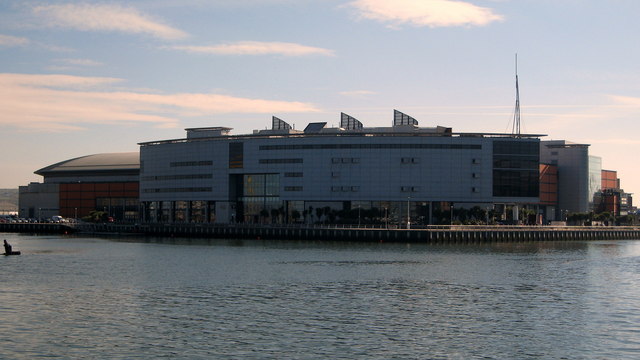
Lagan Weir Bridge
The weir is a chain of steel barriers that are quite massive in size. The Lagan Weir was completed in 1994 when the Laganside Corporation and the European Commission funded it. Charles Brand Ltd was behind its construction, and Ferguson and McIlveen were the designers.
The Lagan Weir sits between the M3 Bridge and the Queen Elizabeth Bridge. Sources claim that the construction of this bridge increased the quality of water. Thus, salmon and other fish started to return to the river. Before the construction, the river killed the aquatic life within.
Their main objective is to retreat the tides to keep the river constant. It succeeded in doing so, and it was pretty important. The problem caused the water to level up to around three meters. This led the water to splash all around, causing a lot of mud, which was so unpleasant to the eyes, not to mention the loud odour that resulted from the mud, especially during the hot months of the year.
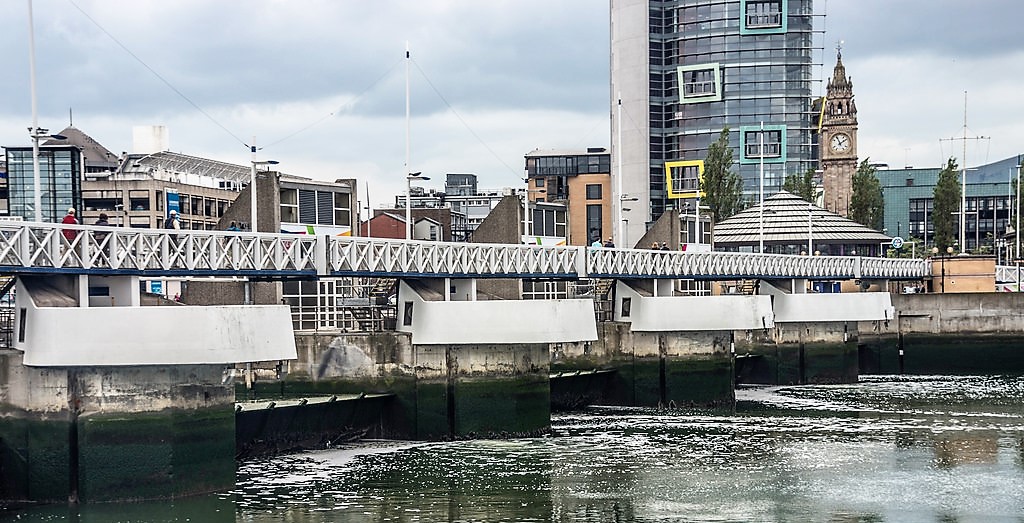
The project also included Lagan Lookout. It is a centre that welcomes visitors eager to learn about the history of the weir and the Lagan itself. You can also learn about the function of the barriers. The Lagan has played an essential role in the history of Belfast, and the best way to discover how is to visit the Lagan Lookout.
Clarendon Dock
The Clarendon Dock is one of the popular spots in Belfast that people usually visit. It lies just across the River Lagan from the Titanic Quarter. People say the shipbuilding industry started there, for it was one of the dry docks in Belfast.
Old Derelict Belfast Church
This is one of the significant churches of Belfast. It had been home for the Hitchens family for many years. On the walls of the church, tales and stories are engraved. That includes the commemoration of two young girls who died too early, Clare Hughes and Paula Strong. Applicant Alskea Contracts owns the site. In 2017, they had plans to build homes on the grounds where the building sits. They believe that is a better utilisation of the building since the church is no longer in use.
Belfast Community Circus School
In 1985, Donal McKendry, Jim Webster, and Mike Moloney established Belfast Community Circus School. They wanted to promote their skills by teaching people the skills of the circus. Despite all the obstacles they had been through, they succeeded and came through. They became popular throughout Northern Ireland, operating workshops and creating entertaining shows. They presented shows in many venues, including art centres, church halls, and community centres.
Right now, the BCCS holds a significant number of shows annually. They teach young people and feature them in shows for exposure and fame. The shows usually take place on the streets to attract more people to learn about the art of the circus. At other times, they occur inside the Circus School. They even present an annual show, the Festival of the Fools.
Raleigh, the All-Steel Bicycle
Frank Bowden firmly believed that riding bikes gives people happiness and thrill. We can’t say he was ever wrong about that. No matter how old you are, you will always be joyful while hopping on a bike. Thus, in the late 17th century, he co-founded Raleigh Bicycle Company. He started his business in Nottingham in a small shop on Raleigh Street, hence the name.
Later, he became the world’s largest bicycle manufacturer. It has been over a century, and Raleigh still shows the world how fun bike rides can be. Those bikes have witnessed countless wins on most of the world’s roads and trails. The company’s name can be found on the walls of the popular spots in Belfast. That just shows how great the company was and has always been.
Belfast a City You Need to Visit
You can keep reading on and on about the fascinating history of Belfast. But we are here to tell you nothing can beat being physically present in such a fantastic city. No matter how much knowledge you have about a place, being there is always more thrilling. Live the experience and explore the city’s history all by yourself.
More worthy reads:
A walk around Belfast City| A guide to Belfast for movie fans| Stories of bravery on the RMS Titanic| Danny Boy song: lyrics, history and more|


